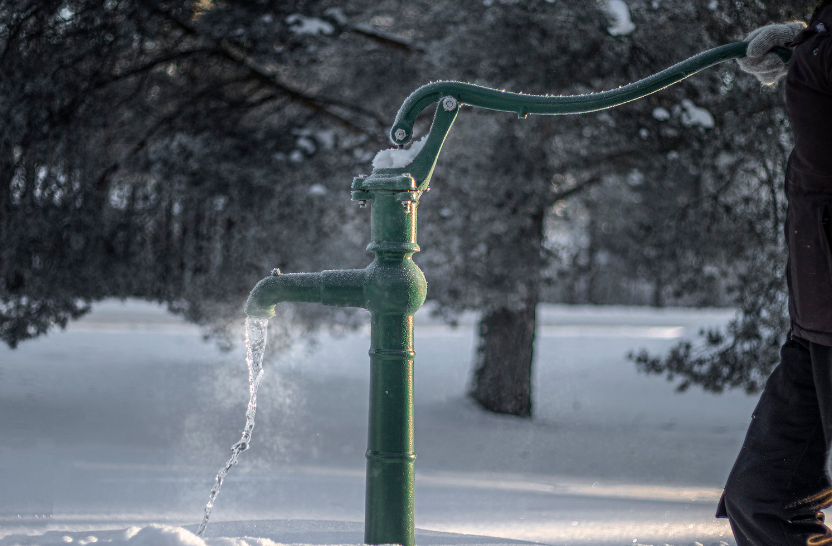As the owner of Austin Drilling & Well Repair Inc, a reputable well drilling contractor company in Columbia, SC, I understand the challenges that freezing temperatures can pose to water wells, particularly when it comes to the well pump. When a well pump freezes, it can disrupt the water supply to your home and cause potential damage to the well system. In this article, we’ll guide you through the necessary steps to take if your well pump freezes and offer valuable tips to prevent future freezing incidents.
The first thing you need to know is that if your well pump freezes, do not panic. This situation, although requiring immediate attention, is solvable. The main aim is to thaw the frozen well pump as soon as possible to have your water supply back on track and prevent further damage. It’s always advisable to call in a professional in such scenarios, as attempting to thaw a pump yourself could lead to more harm than good if not done correctly.
 Before we delve into the details, it’s essential to understand why well pumps freeze. Well pumps are typically installed underground where temperatures remain relatively stable, protecting them from freezing conditions. However, if the pump is poorly insulated or if there are gaps that allow cold air to seep in, the temperature around the pump can drop below freezing, causing the water inside the pump and the pipes to freeze. Understanding this can guide you in taking preventative measures to protect your well pump in the future.
Before we delve into the details, it’s essential to understand why well pumps freeze. Well pumps are typically installed underground where temperatures remain relatively stable, protecting them from freezing conditions. However, if the pump is poorly insulated or if there are gaps that allow cold air to seep in, the temperature around the pump can drop below freezing, causing the water inside the pump and the pipes to freeze. Understanding this can guide you in taking preventative measures to protect your well pump in the future.
Step 1: Shut Off Power If you suspect that your well pump is frozen, the first step is to turn off the power supply to the well pump. Shutting off the power prevents the pump from running, reducing the risk of damage if the pump’s motor has been affected by freezing temperatures.
Step 2: Insulate and Thaw the Pump Once the power is off, proceed to insulate the well pump and its components. Wrap the pump with insulating materials, such as blankets or foam, to retain whatever heat remains and help thaw the pump. You can also use a heat source, like a heat lamp or heating pad, to gently warm the pump and facilitate the thawing process. Important: Avoid using an open flame or excessive heat, as it may damage the pump or lead to safety hazards.
Step 3: Check for Frozen Pipes Inspect the well’s pipes, especially those leading to and from the pump, for signs of freezing. If you find any frozen pipes, gently warm them using a hairdryer, heat tape, or warm towels. Never use a torch or open flame on pipes, as it can cause damage or create a fire hazard.
Step 4: Allow Thawed Pump to Rest After you’ve insulated and thawed the well pump and its components, give the pump ample time to rest before restoring power. Rushing to turn the power back on immediately after thawing can put extra stress on the pump’s motor. Allow the pump to reach room temperature naturally to prevent potential damage.
Step 5: Restore Power and Monitor Once you’ve allowed the pump to rest, restore power to the well pump. Observe the pump’s performance carefully and listen for any unusual noises. If the pump fails to operate correctly or you notice any issues, it’s time to contact Austin Drilling & Well Repair Inc for professional assistance.
Preventing Future Well Pump Freezes:
Preventing Future Freezing Incidents: Prevention is always better than cure. To safeguard your well pump from freezing during the winter months, consider these proactive measures:
- Insulate the Well: Adding insulation around the well casing and pipes can help protect the pump from freezing temperatures. Consider using insulation blankets or foam wraps designed for well protection.
- Install a Well House or Enclosure: Constructing a well house or enclosure shields the pump and components from harsh weather conditions, keeping them at a more stable temperature.
- Allow a Slow Drip: On particularly cold nights, allowing a slow drip from a faucet connected to the well system can help prevent freezing by keeping water circulating.
- Use Heat Tape: Apply heat tape to vulnerable areas of the well system, such as exposed pipes or the well pump, to provide additional warmth during freezing temperatures.
- Monitor Weather Forecasts: Stay vigilant about upcoming freezing temperatures and take extra precautions to protect your well pump during extreme weather events.
When your well pump freezes, prompt action is essential to prevent further damage and restore water flow. By following the steps outlined in this guide, you can effectively address a frozen well pump and take preventive measures to protect your well from future freezing incidents. If you encounter any difficulties or have concerns about your well’s performance, don’t hesitate to reach out to Austin Drilling & Well Repair Inc. Our team of experienced well professionals is dedicated to providing reliable solutions and ensuring a consistent water supply from your well throughout the year.
Thawing a Frozen Well Pump
As the owner of Austin Drilling & Well Repair Inc, a reputable well drilling contractor company in Columbia, SC, I understand the challenges homeowners face during freezing temperatures when their well pump becomes frozen. A frozen well pump can disrupt the water supply to your home and lead to potential damage if not addressed promptly and properly. In this comprehensive guide, we’ll walk you through the step-by-step process of unthawing your well pump safely and effectively.
Step 1: Safety First Before attempting to unthaw your well pump, ensure your safety and the safety of those around you. Turn off the power supply to the well pump to prevent any accidents or electrical hazards during the process. Locate the circuit breaker or fuse box that controls the well pump and switch it off.
Step 2: Identify the Frozen Well Pump Confirm that your well pump is indeed frozen by checking the well’s other water sources. If all the faucets and fixtures in your home are without water, it’s likely the well pump is frozen. Examine the well pump’s components and pipes for signs of ice buildup or frost.
Step 3: Thawing with Gentle Heat Gently applying heat is the most effective way to thaw a frozen well pump. Wrap the well pump and its components with insulating materials such as blankets or foam to retain whatever heat remains and prevent further cooling. Use a heat source, such as a heat lamp, heating pad, or portable heater, to warm the pump gradually.
Important: Avoid using open flames or excessive heat, as they can cause damage to the pump and create safety hazards. Additionally, refrain from using hot water to thaw the pump, as sudden temperature changes may crack or damage the equipment.
Step 4: Thawing the Pipes Frozen pipes can also contribute to a frozen well pump. Inspect the pipes leading to and from the well pump for signs of freezing. If you encounter frozen pipes, apply gentle heat using a hairdryer, heat tape, or warm towels to thaw them.
Step 5: Patience is Key Allow sufficient time for the well pump and pipes to thaw. Rushing the process may cause additional stress on the pump’s motor and lead to potential damage. Monitor the thawing process closely, and be patient.
Step 6: Restoring Power and Observation Once the well pump and pipes have thawed, restore the power supply to the pump. Turn on the circuit breaker or switch the fuse back on. Observe the pump’s performance and listen for any unusual noises. If the pump does not operate correctly or you notice any issues, it’s time to contact Austin Drilling & Well Repair Inc for professional assistance.
Unthawing a frozen well pump requires careful attention, patience, and the right approach to ensure the pump’s safety and functionality. By following the steps outlined in this guide and taking preventive measures to protect your well pump, you can address a frozen pump effectively and enjoy a consistent water supply from your well throughout the winter season. If you encounter any difficulties or have concerns about your well pump’s performance, don’t hesitate to contact Austin Drilling & Well Repair Inc. Our team of experienced well contractors is dedicated to providing reliable solutions and maintaining a dependable water supply from your well year-round.


